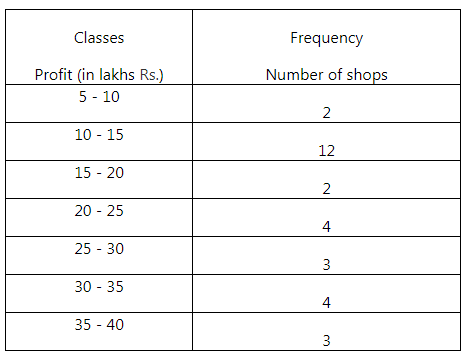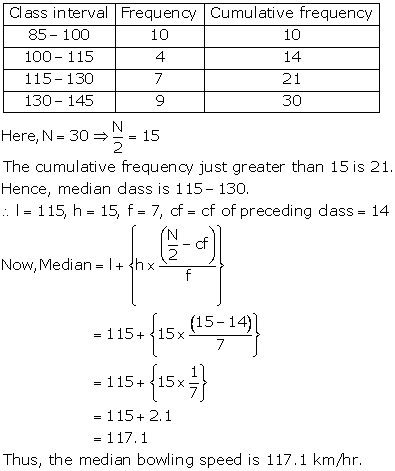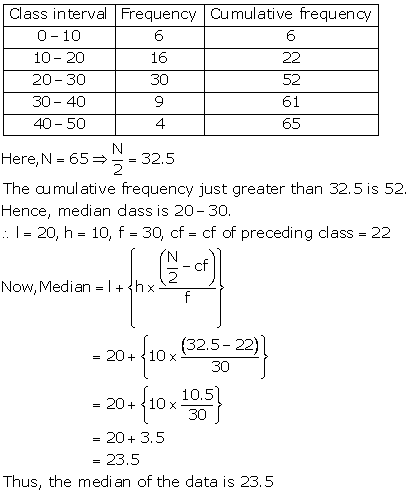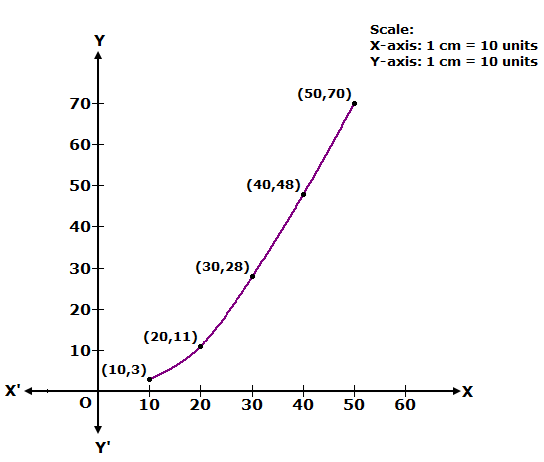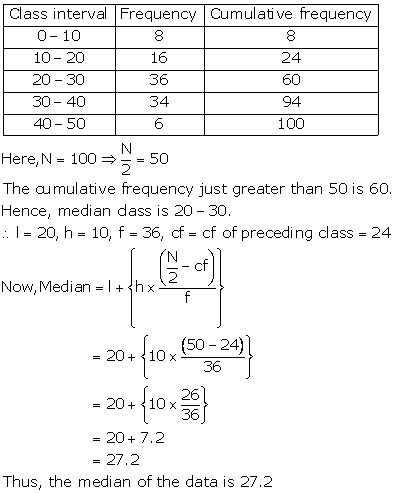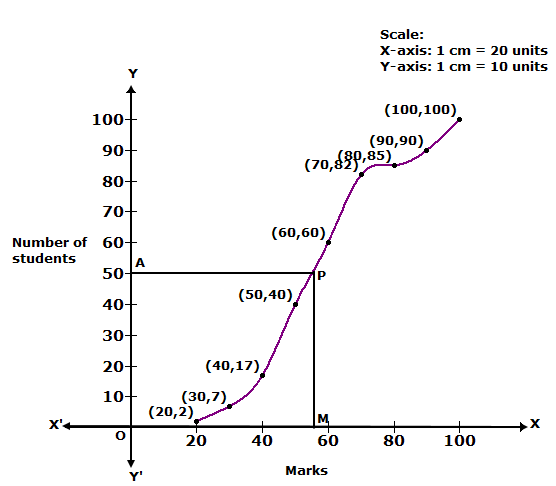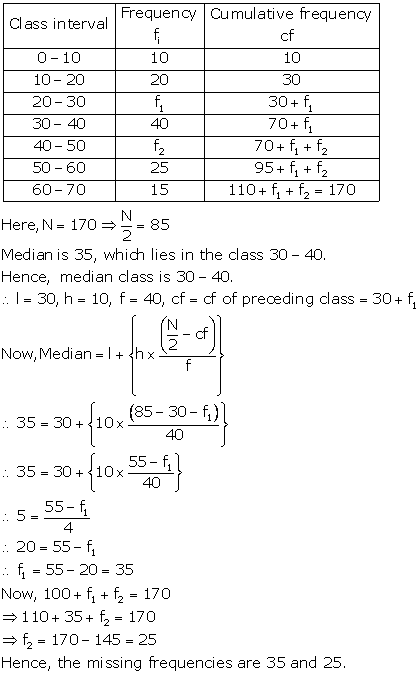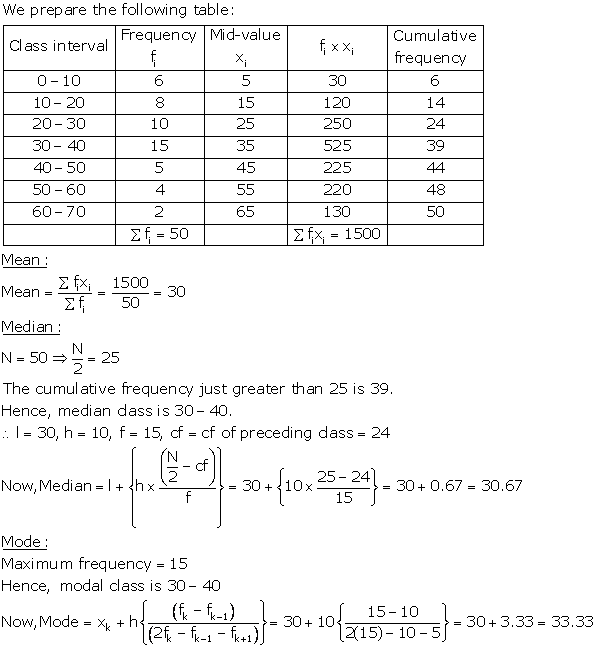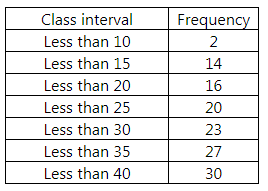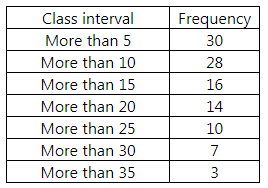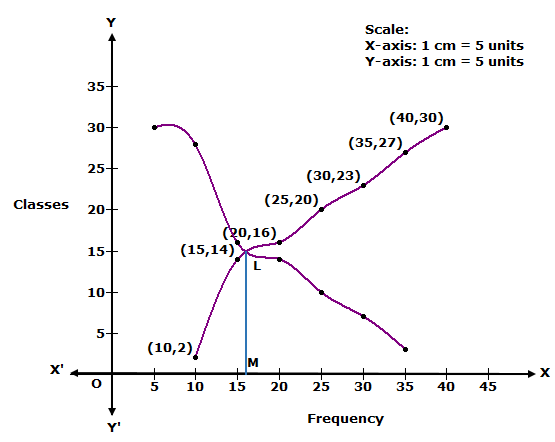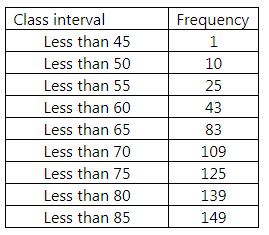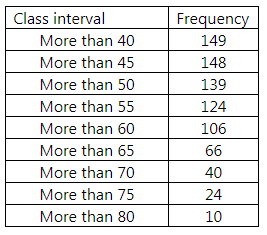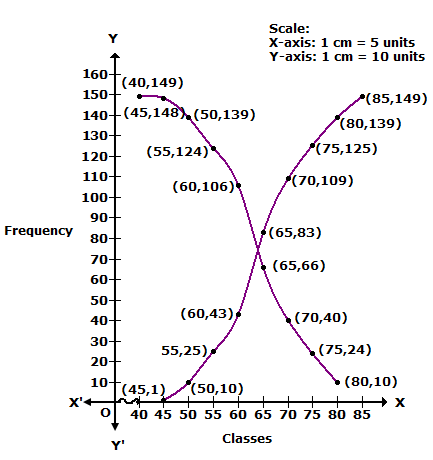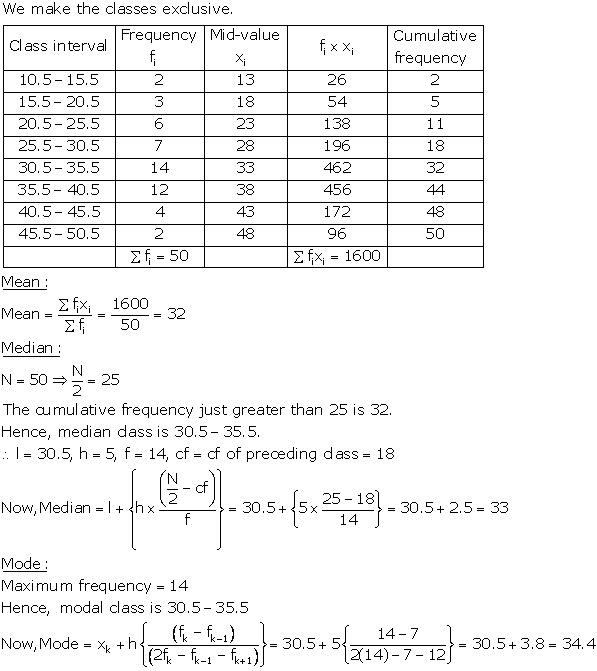CA Foundation Economics Chapter 3 MCQ Questions Theory Of Production and Cost
MULTIPLE CHOICE QUESTIONS
Theory of Production
1. The term production in economics means-
(a) creation of a physical product only
(b) rendering of a service only
(c) creation of economic utilities
(d) none of the above
2. Which of the following is considered production in economics?
(a) Singing a song in a birthday party
(b) Run for fun
(c) Giving tuitions
(d) Helping an old man to cross road
3. Making use of personal skill of doctors, lawyers, actors, etc. results in the creation of-
(a) form utility
(b) place utility
(c) personal/service utility
(d) time utility
4. Making available materials at times when they are normally not available is called conferring of utility of-
(a) place
(b) time
(c) form
(d) service
5. Which of the following statements incorrect?
(a) Man cannot create matter.
(b) Production is an activity of making some-thing material only.
(c) Production can be defined as addition of utility.
(d) Production is any economic utility which is directed towards the satisfaction of the wants of the people.
6. Economic utilities may be created or added
(a) By changing the form of raw materials into finished goods
(b) By transporting goods from one place to another
(c) By making things available when they are required
(d) All the above
7. Which of the following is not a feature of land
(a) Free gift
(b) Limited in quantity
(c) Mobile factor
(d) Indestructible
8. The factor of production which has no reserve price is-
(a) land
(b) labour
(c) capital
(d) all the above
9. Which of the following can be considered as labour in economics-
(a) Singing for pleasure
(b) A teacher teaching his own child at home
(c) Looking after, a sick friend
(d) A teacher teaching in school
10. The supply of land is-
(a) Unlimited
(b) Increased
(c) Decreased
(d) Limited
11. Land in economics means-
(a) Material and Non-material goods
(b) Minerals under the surface of earth
(c) All natural resources available to man for producing wealth
(d) All the above
12. Labour is-
(a) Active factor
(b) Passive factor
(c) Alternative factor
(d) None of the above
13. Which factor loses its value of it cannot find a purchaser today-
(a) Land
(b) Labour
(c) Capital
(d) All the above
14. Supply curve of labour is-
(a) upward sloping
(b) horizontal
(c) backward bending
(d) vertical
15. Income effect when wage rises means
(a) work hours rise
(b) work hours fall
(c) work hours remain constant
(d) work hours first fall and then rise
16. Which of the following statements is not true?
(a) Capital is a produced means a production.
(b) Capital is a man made instruments of production.
(c) Capital is a primary factor of production.
(d) Machine tools, factories, dams, canals, etc. are examples of capital.
17. Tools, machines, etc. are included in-
(a) circulating capital
(b) fixed capital
(c) sunk capital
(d) human capital
18. The capital which belongs to the society as a whole is called-
(a) Individual Capital
(b) Human Capital
(c) Social Capital
(d) Floating Capital
19. Raw material is an example of –
(a) Circulating Capital
(b) Fixed Capital
(c) Tangible Capital
(d) Real Capital
20. Which capital includes education, training, skill, ability?
(a) Human Capital
(b) Individual Capital
(c) Social Capital
(d) Real Capital
21. Goodwill, patent rights, etc. are examples of –
(a) Tangible Capital
(b) Real Capital
(c) Intangible Capital
(d) Human Capital
22. Which of the following statements is true?
(a) Capital Formation involves production of more capital goods.
(b) Capital Formation is also called investment.
(c) To accumulate capital goods, some current consumption is to be sacrificed.
(d) All the above
23. Surplus of production over consumption in an economy in a year is called-
(a) Capital
(b) Capital formation
(c) Stock
(d) Savings
24. The third stage of capital formation is-
(a) creation of savings
(b) mobilization of savings
(c) distribution of savings
(d) investment of savings
25. With an increase in income-
(a) the propensity to consume increases
(b) the propensity to save increases
(c) the propensity to consume remains constant
(d) the propensity to save falls
26. A ____ country has greater ability to save.
(a) poor
(b) developing
(c) rich
(d) under developed
27. An individual’s saving level depends upon-
(a) ability to save
(b) willingness to save
(c) both ‘a’ & ‘b’
(d) only ‘a’
28. The factor which mobilize land, labour and capital; combines them in the right proportion and then organizes the production activity is –
(a) Owner
(b) Labour
(c) Manger
(d) Entrepreneur
29. The reward of all factors of production is usually predetermined (pre-fixed) except-
(a) Land
(b) Labour
(c) Capital
(d) Entrepreneur
30. The reward of an entrepreneur for his efforts and risk-taking is-
(a) Interest
(b) Profit/Loss
(c) Rent
(d) Wages
31. The reward of capital is-
(a) Rent
(b) Interest
(c) Wages
(d) Profit
32. The reward of an entrepreneur i.e. profit is –
(a) predetermined income
(b) residual income
(c) constant income
(d) none of the above
33. The risks which can be anticipated and can be insured against are called-
(a) Insurable risks
(b) Non-Insurable risks
(c) Unforeseeable risks
(d) None of the above
34. The risks like change in demand for a commodity, the cost structure, fashion, technological, etc. which an entrepreneur has to bear are called-
(a) Uncertainties
(b) Insurable risks
(c) Foreseeable risks
(d) Both ‘a’ and ‘c’
35. According to _____ innovations introduced by an entrepreneur give rise to profits.
(a) Prof. F.H. Knight
(b) Prof. Joseph A. Schumpeter
(c) Prof. Paul Samuelson
(d) Dr. Alfred Marshall
36. Which of the following statement is incorrect?
(a) Mobilisation of savings is done through network of banking and other financial institutions.
(b) Land lacks geographical mobility but has occupational mobility.
(c) Entrepreneur is also called the organizer, § the manager or the risk taker.
(d) Labour can be stored.
37. Labour is ____
(a) Human factor
(b) Perishable
(c) inseparable from labour
(d) All the above
38. Leather in a shoe factory is
(a) Fixed capital
(b) Sunk capital
(c) Floating Capital
(d) Circulating capital
39. _____ Cannot be stored.
(a) Land
(b) Labour
(c) Capital
(d) Both a & b
40. Capital that can be used for several purposes or by several industries is
(a) Working capital
(b) Social capital
(c) Floating capital
(d) Human capital
41. Addition to the stock of capital goods in a country means
(a) Capital reduction
(b) Investment
(c) Capital formation
(d) Both (b) & (c)
42. Find the odd out
(a) Capital is man-made
(b) All capital is wealth
(c) Capital is durable
(d) Mobilisation of savings
43. Consider the following groups of items:
(i) Factory buildings
(ii) Plant and Machinery
(iii) Stocks of raw materials
(iv) Wage bills
Which of these are known as working capital?
(a) i and ii
(b) iii and iv
(c) i, ii and iii
(d) ii, iii and iv
44. The production function means relationship between
(a) Cost of input
(b) Cost of output
(c) Physical input to physical output
(d) Wages of profit
45. A production function is an expression of _____ relation between inputs and outputs.
(a) monetary
(b) economic
(c) quantitative
(d) qualitative
46. A short run production function is one in which-
(a) at least one factor is fixed
(b) all factors are fixed
(c) all factors are variable
(d) at least one factor is variable
47. Technically efficient combinations of inputs of those which-
(a) minimizes wastage
(b) maximizes profits
(c) minimises cost
(d) maximises reve¬nue
48. In the short period there is no change in factors.
(a) fixed
(b) variable
(c) human
(d) physical
49. In the period all factors are variable.
(a) short
(b) long
(c) market
(d) secular
50. In its original for Cobb-Douglas production function applies to-
(a) individual manufacturing firm
(b) individual firm
(c) whole of manufacturing in US
(d) None of the above
51. Cobb-Dauglas production function revealed that the increase in the manufacturing production was contributed by labour and capital respectively by-
(a) 3/4 th and l/4 th
(b) l/4 th and 3/4 th
(c) 2/3 rd and l/3 rd
(d) None of the above
52. Cobb-Douglas production-
(a) is linear
(b) is homogeneous
(c) shows constant returns to scale
(d) all the above
53. Cobb-Douglas production function exhibits returns to scale.
(a) increasing
(b) diminishing
(c) constant
(d) negative
54. The above equations shows that-

(a) One factor is fixed and another variable
(b) Both factors are fixed
(c) Both factors are variable
(d) Both factors are semi-variable
55. The main difference between the short period/ run and the long period/run is that –
(a) in the short period all inputs are fixed, while in the long period all inputs are variable.
(b) in the short run at least one input is fixed
(c) in the short run firm varies the quantities of all inputs
(d) in the long run, the firm uses the existing plant capacity
56. The law of variable proportions is a law of production which takes place in the-
(a) market period
(b) short run
(c) long run
(d) very long period
57. All but one are the assumptions of the law of variable proportions. Which one is not?
(a) There is only one factor which is variable
(b) All units of variable factor are homogeneous
(c) State of technology remains constant
(d) Applies in long run
58. When there is a fixed factor and a variable factor, then the law would be-
(a) law of increasing returns to scale
(b) law of constant returns to scale
(c) law of decreasing returns to scale
(d) law of variable proportions
59. The total quantity of goods and services produced by a firm with the given inputs during a specified period of time is called-
(a) Total Product
(b) Average Product
(c) Marginal Product
(d) Labour Product
60. The amount of output produced per unit of variable factor employed is called-
(a) Total Product
(b) Average Product
(c) Marginal Product
(d) Labour Product
61. The change in TP resulting from the employment of an additional unit of a variable factor is called-
(a) Total Product
(b) Marginal Product
(c) Average Product
(d) All the above
62. The average product of a variable input can be described as-
(a) total product divided by the number of units of variable input
(b) additional output resulting from employment of additional unit of variable factor
(c) the total quantity of goods produced with all inputs
(d) None of the above
63. TP of variable factor is –

(a) only i
(b) only i and iii
(c) only ii
(d) only ii and iv
64. Initially TP curve increases at an-
(a) increasing rate
(b) diminishing rate
(c) constant rate
(d) maximum rate
65. As more units of variable factor is employed it will-
(a) always increase the TP
(b) always decrease the TP
(c) not always increase the TP
(d) always result in constant TP
66. As long as TP is positive, AP is-
(a) negative
(b) constant
(c) positive
(d) falling
67. AP curve is-
(a) U-Shaped
(b) S-Shaped
(c) inverted U-Shaped
(d) inverted S-Shaped
68. MP curve is the slope of at each point.
(a) AP curve
(b) TP curve
(c) TR curve
(d) AR curve
69. When TP is maximum, MP is –
(a) rising
(b) falling
(c) zero
(d) negative
70. When TP is falling, MP is –
(a) zero
(b) rising
(c) negative
(d) falling
71. MP curve is –
(a) U – shaped
(b) S- shaped
(c) inverted U – shaped
(d) inverted S – shaped
72. When TP is maximum, the slope of TP curve is –
(a) rising
(b) falling
(c) constant
(d) zero
73. TP is the area under the –
(a) AP curve
(b) AR curve
(c) MP curve
(d) MR curve
74. MP is positive so long as TP is-
(a) increasing
(b) decreasing
(c) maximum
(d) negative
75. When TP is rising-
(a) AP and MP are rising
(b) AP and MP are falling
(c) AP and MP may be either rising or falling
(d) Only MP is either rising or falling
76. When MP is negative-
(a) TP and AP are falling
(b) TP and AP are rising
(c) TP and AP are constant
(d) Only TP is falling
77. When MP is at a maximum-
(a) AP = MP and TP is rising
(b) AP < MP and TP is rising
(c) AP > MP and TP is rising .
(d) AP and TP are falling
78. If MP goes on increasing, it should be understood that law of _____ is applying.
(a) increasing returns
(b) decreasing returns
(c) constant returns
(d) diminishing returns
79. If MP goes on decreasing it should be understood that law of _____ is in operation.
(a) decreasing cost
(b) constant cost
(c) average cost
(d) increasing cost
80. When MP is falling, TP will increase at the rate.
(a) constant
(b) increasing
(c) diminishing
(d) normal
81. When average product is maximum, marginal product is equal to-
(a) total product
(b) zero
(c) one
(d) average product
82. MP curve cuts AP curve from-
(a) its top
(b) below
(c) both ‘a’ and ‘b’
(d) neither ‘a’ nor ‘b’
83. The marginal product is maximum at the .
(a) equilibrium point
(b) inflection point
(c) focal point
(d) optimum point
84. The stage of production where the marginal product is greater than the average product is-.
(a) stage of increasing returns
(b) stage of diminishing returns
(c) stage of negative returns
(d) stage of constant returns
85. Which of the following statements reveal the diminishing returns?
(a) The MP of a factor is constant
(b) The MP of a factor is positive and rising
(c) The MP of a factor is falling and negative
(d) The MP of a factor is positive but falling
86. The MP curve is above the AP curve when the average product-
(a) is constant
(b) is falling
(c) is increasing
(d) is negative
87. The actual stage of production under the law of variable proportions is-
(a) stage of increasing returns
(b) stage of diminishing returns
(c) stage of negative returns
(d) stage of either increasing or diminishing returns
88. Reason for rise in both AP and MP curves is-
(a) under utilization of the fixed factor
(b) under utilization of the variable factor
(c) over utilization of the fixed factor
(d) over utilization of the variable factor
89. Reason for fall in both AP and MP curves is-
(a) under utilization of the fixed factor
(b) over utilization of the fixed factor
(c) under utilization of the variable factor
(d) full utilization of the variable factor
90. When AP and MP curves are rising, MP curve rises-
(a) at a faster rate
(b) at a lower rate
(c) at normal rate
(d) at constant rate
91. When AP and MP curves are falling, MP curve falls-
(a) at a faster rate
(b) at a lower rate
(c) at normal rate
(d) at constant rate
92. When AP and MP curves are rising, AP curve _____
(a) lies above the MP curve
(b) lies below the MP curve
(c) co-inside with the MP curve
(d) none of the above
93. The reason for increasing returns to factor is-
(a) Indivisibility of fixed factor
(b) Division of labour
(c) Specialisation
(d) All the above
94. When the ideal factor ratio is violated in short run-
(a) diminishing returns to a factor set in
(b) MP of the variable factor starts falling
(c) TP increases at a diminishing rate
(d) All the above
95. AP increases so long as-
(a) MP > AP
(b) MP < AP
(c) MP = AP
(d) MP is zero
96. AP may continue to even when MP starts declining.
(a) rise
(b) fall
(c) remain constant
(d) fluctuate
97. MP curve cuts AP curve from its top, this means-
(a) MP < AP
(b) MP > AP
(c) MP is rising
(d) MP is zero
98. Increasing MP implies TP is increasing at-
(a) increasing rate
(b) constant rate
(c) diminishing rate
(d) fluctuating rate
99. MP of labour becoming negative implies-
(a) excessive employment
(b) disguised unemployment
(c) over exploitation of the fixed factor
(d) all the above
100. TP starts declining only when-
(a) MP is rising
(b) MP is falling
(c) MP is negative
(d) MP is constant
101. MP of the variable factor may be zero or negative, but AP continue to be-
(a) constant
(b) positive
(c) negative
(d) zero
102. AP decreases when-
(a) MP = AP
(b) MP > AP
(c) MP < AP
(d) None of the
Use the following information of answer questions 103 to 105

103. In the above equations the fixed factor is-
(a) Labour
(b) Capital
(c) Output
(d) both ‘a’ & ‘b’
104. The MP of variable factor is-
(a) 4
(b) 5
(c) 6
(d) 7
105. In the equation (i) the AP of the variable factor is-
(a) 12 units
(b) 14
(c) 10
(d) 16
Use the following data to answer questions 106 and 107

TP is Zero level of employment
106. The total product when 5 units of labour are employed is-
(a) 60
(b) 76
(c) 90
(d) 96
107. The average product of 3rd unit of labour is-
(a) 21
(b) 20
(c) 19
(d) 18
Use the following data to answer questions 108 and 109

108. The total product of 3 units of labour is-
(a) 30
(b) 50
(c) 90
(d) 120
109. The marginal product of 5th unit of labour is-
(a) 10
(b) 20
(c) 30
(d) 40
Use the following data to answer questions 110 and 112

110. What is the total product when 2 hours of labour are employed?
(a) 160
(b) 200
(c) 360
(d) 540
111. What is the average product of the first 2 hours
(a) 250
(b) 260
(c) 270
(d) 280
112. What is the marginal product of the 3rd hour of labour?
(a) 160
(b) 180
(c) 120
(d) 200
113. Find the odd one out-
(a) law of diminishing returns to factor
(b) law of returns to scale
(c) cost function
(d) production function
114. The production process described below exhibits

(a) increasing marginal product of labour
(b) increasing returns to scale
(c) diminishing marginal product of labour
(d) constant marginal product of labour
115. Diminishing marginal returns for the first four doses of inputs when all factors of production are increased in the same proportion is revealed by the total product sequence
(a) 50, 50, 50, 50
(b) 50, 100, 150, 200
(c) 50, 90, 120, 140
(d) 50, 110, 180, 260
116. The behaviour of output in response to a change in the scale is studied in the-
(a) Market Period
(b) Short Period
(c) Long Period
(d) Very Short Period
117. In the theory of production the long runs is defined as the period of time in which-
(a) All factors can be varied
(b) No factors can be varied
(c) Some factors are fixed but other can be varied.
(d) None of these
118. If all inputs are increased in the same proportion, then it is a case of-
(i) Short run production function
(ii) Long run production function
(iii) Laws of Variable Proportions
(iv) Laws of Returns to Scale
(a) i and ii only
(b) ii and iii only
(c) i and iv only
(d) ii and iv only
119. In the long run-
(a) all inputs are fixed
(b) one input is fixed and one input is variable
(c) all inputs are variable
(d) two inputs are variable and one input is fixed
120. Law of increasing returns to scale will apply if-
(a) economies exceed the diseconomies
(b) economies and diseconomies are equal
(c) diseconomies exceed the economies
(d) in all the above situations
121. Internal economies accrue when-
(a) an industry develops
(b) an economy grows
(c) foreign trade develops
(d) a firm expands production in long run
122. External economies accrue when-
(a) a firm expands
(b) an individual progress
(c) an industry expands
(d) trade expands
123. If we have constant returns to scale and we increase both labour and capital by 10% output will also increase by-
(a) 20%
(b) 30%
(c) 10%
(d) 5%
124. Find the odd one out-
(a) All factors are variable
(b) A firm can experience returns to scale
(c) Management can be reorganized
(d) Law of variable proportions
125. Economies of scale means-
(a) reduction in per unit cost of production
(b) reduction in per unit cost of distribution
(c) addition to the per unit cost of production
(d) reduction in the total cost of production
126. Linear Homogeneous Production Function is-
(a) Increasing Returns to Scale
(b) Constant Returns to Scale
(c) Diminishing Returns to Scale
(d) Negative Returns to Scale .
127. Internal economies relate to
(a) Marketing economies
(b) Financial economies
(c) Managerial economies
(d) All the above
128. In which of the following cases there is less than proportionate increase in output when all factors are increase-
(a) Constant returns to scale
(b) Diminishing returns to scale
(c) Increasing returns to scale
(d) Increasing as well as diminishing returns to scale
129. Problems like difficulties in management, lack of supervision, higher input cost, etc. due to large scale production leads to-
(a) economies of scale
(b) real economies of scale
(c) diseconomies of scale
(d) Both ‘b’ and ‘c’
130. Benefits like improved organization, division of labour and specialization, better supervision and control, etc. enjoyed by a firm when it expands production leads to-
(a) economies of scale
(b) real economies
(c) diseconomies of scale
(d) both ‘a’ and ‘b’
131. _____ economies are common to all the firms in an industry and shared by many firms or industries.
(a) internal
(b) external
(c) real
(d) all the above
132. _____ economies are related to an individual firm’s own cost reduction effort.
(a) internal
(b) external
(c) real
(d) all the above
133. means all those factors which raise the cost of production per unit when production is expanded by a firm beyond optimal capacity.
(a) External economies
(b) Internal economies
(c) External diseconomies
(d) Internal diseconomies
134. Economies of localization, cheaper inputs, growth of ancillary industries, etc. are examples of-
(a) Internal economies
(b) Internal diseconomies
(c) External economies
(d) External diseconomies
135. _____ economies can be of long term in nature
(a) nature
(b) internal
(c) production
(d) real
136. _____ shows all the input combinations that will produce the same level of output.
(a) Isoquant
(b) Isocost line
(c) Expansion Path
(d) None of the above
137. Isoquant is also called as _____
(a) production indifference curve
(b) is-product curve
(c) equal-product curve
(d) all the above
138. All of the following are the properties of isoquant except-
(a) An isoquant is downward sloping curve
(b) A higher isoquant represents a higher level of output
(c) Two isoquants can intersect each other
(d) Isoquants are convex to the origin
139. An isoquant slopes-
(a) downward to the left
(b) downward to the right
(c) upward to the left
(d) upward to the right
140. In the context of input-output relation _____ means same output produced from different combinations of inputs.
(a) law of variable proportions
(b) ridge lines
(c) law of constant returns
(d) isoquant
141. A higher isoquants denotes a –
(a) higher level of output
(b) lower level of output
(c) same level of output
(d) none of the above
142. An isoquant is _____ indifference curve
(a) buyer’s
(b) producer’s
(c) trader’s
(d) economy’s
143. The rate of which one factor of production can be substituted for the other is known as-
(a) marginal rate of substitution
(b) marginal opportunity cost
(c) marginal rate of technical substitution
(d) marginal cost
144. The slope is iso-product curve show-
(a) MRSxy
(b) MRTSxy
(c) elasticity of an iso-product curve
(d) none of the above
145. An isoquant is-
(a) downward sloping and concave to origin
(b) downward sloping and convex to origin
(c) downward sloping straight line curve
(d) horizontal straight line curve
146. The convexity of isoquants is due to the _____ MRTSxy
(a) increasing
(b) constant
(c) diminishing
(d) none of the above
147. Convexity of an isoquant implies _____ slope.
(a) diminishing
(b) increasing
(c) constant
(d) none of the above
148. MRTSxy is constant then an isoquant is _____
(a) downward sloping and convex to origin
(b) downward sloping straight line curve
(c) right angled curve
(d) downward sloping and concave to origin
149. MRTSxy is increasing then an isoquant is
(a) downward sloping and convex to origin
(b) downward sloping straight line curve
(c) right angled curve
(d) downward sloping and concave to origin
150. A right-angled isoquant denotes that the
(a) two factors are perfect substitutes of each other
(b) two factors are imperfect substitutes of each other
(c) two factors are perfect complements of each other
(d) position between perfect substitutes and perfect complements
151. The MRTSxy is constant if two factors are _____ of each other
(a) perfect substitutes
(b) perfect complements
(c) imperfect substitutes
(d) imperfect complements
152. MRTSxy =

153. Increasing MRTSxy could happen only when the _____ operate.
(a) law of increasing returns
(b) law of diminishing returns
(c) law of constant returns
(d) law of negative returns
154. Which of the following isoquant indicates that the two factors ‘X’ and ‘Y’ are imperfect substitutes of each other?

155. At a point near the right hand below the corner of isoquant curve, the MRTSxy of factor ‘X’ for factor ‘Y’ is –
(a) very high
(b) very low
(c) zero
(d) neither high nor low
156. Convexity of an isoquant denotes that the two factors are _____ of each other.
(a) perfect complements
(b) imperfect complements
(c) perfect substitute
(d) imperfect substitutes
157. In order to increase output, if both inputs mustbe increased in fixed proportion, it follows that both the inputs are ____ of each other.
(a) perfect substitutes
(b) perfect complements
(c) imperfect substitutes
(d) imperfect complements
158. _____ is the locus of various combinations of two inputs which a producer can buy with the given outlay and the prices of two inputs.
(a) Isocost line
(b) Opportunity cost line
(c) Production line
(d) Profit line
159. Isocost line is also known as _____
(a) outlay line
(b) price line
(c) producer’s budget line
(d) all the above
160. If the expenditure to be done on purchase of factors increases, the prices of both inputs remaining the same, the firm’s isocost line will –
(a) shift downward
(b) shift upward
(c) remain the same
(d) none of the above
161. The slope of the isocost line can change when the outlay remains the same but the price of –
(a) only one input change
(b) both the inputs change
(c) both inputs remain unchanged
(d) Both ‘a’ and ‘b’
162. The iso-cost line in production optimization is _____
(a) Vertical straight line
(b) Straight line sloping upward towards right
(c) Straight line sloping downwards towards right
(d) Horizontal straight line
163. The slope of isocost line with factor ‘Y’ on the vertical axis and factor ‘X’ on the horizontal axis is –

164. At equilibrium point, a particular isoquant _____ to isocost line
(a) tangent
(b) perpendicular
(c) parallel
(d) concave
165. Where the slope of isoquant = the slope of isocost line, it is the _____ combination of inputs.
(a) maximum cost
(b) least cost
(c) balanced cost
(d) cost-production
166.

(a) consumer is in equilibrium
(b) consumer is not in equilibrium
(c) producer is in equilibrium
(d) producer is not in equilibrium
167. Where the isocost line is tangent to an isoquant-
(a) equal amount of factors give equal output
(b) the prices of the factors are equal
(c) the ratio of prices of the two factors equal MRTS
(d) none of the above
168. All but one of the following statements are correct. Find the incorrect statement.
(a) The word isoquant means equal quantities.
(b) The slope of isoquant is called MRTS.
(c) The producer is at equilibrium where MRTSxy = px / py
(d) A set of isoquant curves is called isocost map.
169. If there is perfect substitution between two factors of production the shape of isoquant is-
(a) linear
(b) non-linear
(c) positively sloped
(d) right angled
170. Condition for the producer’s equilibrium is-
(a) Isoquant should be tangent to the isocost line
(b) At tangency point, isoquant should be convex to origin

(d) all the above
171. Technically efficient combinations of inputs is those which-
(a) minimizes cost
(b) minimizes loss
(c) maximizes profits
(d) maximizes revenue
172. Internal economies and diseconomies of scale occur due to _____ causes.
(i) endogenous
(ii) exogenous
(iii) internal
(iv) external
(a) i and ii
(b) iii and iv
(c) i and iii
(d) ii and iv
173. External economies and diseconomies of scale occur due to _____
(a) endogenous
(b) exogenous
(c) internal
(d) both (b) and (c)
174. When a large firm takes up advertising and grants higher margin to retailers, it is called-
(a) technical economies
(b) managerial economies
(c) marketing economies
(d) financial economies
175. When a firm’s dependence on external sources of funds increase and it finds difficulty to repay, it is a case of –
(a) financial diseconomies
(b) financial economies
(c) managerial diseconomies
(d) technical diseconomies
176. A firm uses two inputs, labour (L) and capital (K). The firm produces and sells a given output. You have the following information PL = ₹40; PK = ₹ 100; MPL = 40; MPK = 40. What would you say about the firm?
(i) That the firm is operating efficiently
(ii) That, the firm is not operating efficiently

(a) Only i
(b) Only ii
(c) i and iii
(d) ii and iv
177. A firm can hire additional labour @ ₹ 50 per hour. By hiring 10 more hours of labour output will increase by 3 units. If per unit sells for ₹ 200, should the firm hire the labour? Why?
(a) No ∴ MP of labour < price of labour
(b) Yes ∴ MP of labour > price of labour
(c) Neither ‘a’ or ‘b’
(d) Only ‘a’
178. If MRTSLK,equals 2, then the MPK / MP1
(a) 1/2
(b) 2/1
(c) 1/1
(d) 0/1
179. Suppose that we are producing holes. The only way to get a hole is to use one man and one shovel. What shall be the shape of isoquants?
(a) downward sloping and convex to origin
(b) downward sloping straight line curve
(c) downward sloping and concave to origin
(d) light angled curve
180. You are doing homework. The inputs needed to produce homework is blue ink pen or black ink pen. What shall be the shape of isoquants?
(a) downward sloping and convex to origin
(b) downward sloping straight line curve
(c) downward sloping and concave to origin
(d) right angled curve
181. When 5 units of variable factor are combined with 5 units of fixed factor and MP remains constant at 10 units. Find TP
(a) 30
(b) 40
(c) 50
(d) 60
182. The production function of a firm is- Q = 5L 1/2 K 1/2 What would be the maximum possible output the firm can produce with 100 units of L and 100 units of K.
(a) 500
(b) 400
(c) 600
(d) None of the above
183. The production function of a firm is- Q = 2 L2 K2 Find the output the firm can produce with 5 units of L and 2 units of K.
(a) 100
(b) 200
(c) 300
(d) 150
184. What will be the output with 10 units of L and 10 units of K, if the production function is Q = 5L + 2K production
(a) 50
(b) 60
(c) 70
(d) 80
185. From the following find out AP and MP of 4th unit of Labour.

(a) 15 ; 15
(b) 10 ; 15
(c) 10 ; -15
(d) 10 ; -10
Theory of Cost
186. Cost analysis refer to the study of ____ inrelation to different production criteria.
(a) production
(b) cost
(c) price
(d) inputs
187. Cost is a _____ function
(a) direct
(b) derived
(c) both direct and derived
(d) none of the above
188. Theory of costs is restatement of the theory of _____ in monetary terms
(a) demand
(b) consumer’s behaviour
(c) production
(d) all the above
189. _____ costs relate to those costs which involve cash payments by the entrepreneur of the firm.
(a) Accounting
(b) Marginal
(c) Economic
(d) Implicit
190. Accounting costs are also called _____ costs.
(a) economic
(b) implicit
(c) explicit
(d) opportunity
191. Wages paid to labourers, cost of raw-materials purchase, interest on the money borrowed, etc. are examples of _____ cost.
(i) accounting
(ii) implicit
(iii) economic
(iv) explicit
(a) i and ii
(b) iii and iv
(c) ii and iii
(d) i and iv
192. Economic costs includes-
(a) Accounting cost + Explicit cost
(b) Accounting cost + Implicit cot
(c) Fixed cost + Variable cost
(d) Accounting cost + Direct cost
193. Economic costs equals-
(a) Explicit cost + Implicit cost
(b) Fixed cost + Variable cost
(c) Accounting cost + Explicit cost
(d) none of the above
194. _____ costs are the value of foregone opportunities that do not involve any contractual obligation of cash payment.
(a) Explicit
(b) Implicit
(c) Accounting
(d) Hidden
195. _____ includes all payments made to factors of production and opportunity cost.
(a) Accounting costs
(b) Economic costs
(c) Implicit costs
(d) Explicit costs
196. An entrepreneur must recover his _____ cost if he wants to earn normal and abnormal profits.
(a) accounting
(b) implicit
(c) economic
(d) all the above
197. Which of the following are implicit costs?
(i) A shop taken on rent by entrepreneur
(ii) Savings invested to start business
(iii) An individual is both owner and manager of business
(iv) A farmer takes a farm on rent
(a) i and ii
(b) iii and iv
(c) ii and iii
(d) i and iv
198. Which of the following are explicit costs?
(i) A producer borrows money to start a factory
(ii) A producer invests his savings to start a factory
(iii) Wages paid to workers
(iv) An individual is both owner & manager of business
(a) i & ii
(b) iii & iv
(c) i & iii
(d) ii & iv
199. The difference between Economic Cost and Accounting Cost is equal to _____
(a) Implicit cost
(b) Explicit cost
(c) Marginal cost
(d) none of the above
200. All but one is not included in the books of account? Which one?
(a) Taxes
(b) Electricity charges
(c) Cost of raw-material
(d) Imputed salary of owner
201. _____ costs involve actual expenditure of funds on wages, material, rent, etc.
(a) Opportunity
(b) Outlay
(c) Economic
(d) Implicit
202. The cost that a firm incurs in purchasing or hiring, the services of various productive factors is referred to as-
(a) Explicit cost
(b) Fixed cost
(c) Implicit cost
(d) Variable cost
203. Explicit costs are also known as-
(a) Accounting costs
(b) Outlay costs
(c) Out-of-Pocket costs
(d) All the above
204. For an economist, the cost means-
(a) Accounting Costs
(b) Economic Costs
(c) Outlay Costs
(d) Sink Cost
205. Implicit costs are also known an-
(a) Opportunity costs
(b) Imputed costs
(c) Notional costs
(d) All the above
206. Opportunity cost refers to-
(a) money expenses incurred on purchasing or hiring factor, services
(b) the next best alternative
(c) involving cash payment
(d) all the above
207. Opportunity cost refers to-
(a) Cost of opportunity foregone
(b) Comparison between the policy that was chosen and the policy that was rejected
(c) Costs relating to sacrificed alternatives
(d) all the above
208. The cost of one thing in terms of the alternative given up is known as-
(a) Production cost
(b) Accounting cost
(c) Opportunity cost
(d) Real cost
209. Opportunity costs find its application in situations _____
(a) for short run and long run decision making
(b) capital expenditure budgeting
(c) when the supply of input factors is strictly limited
(d) all the above
210. Opportunity costs are a result of _____
(a) Abundance of resources
(b) Scarcity of resources
(c) Technology obsolescence
(d) Cost controls
211. All but one are true about opportunity cost. Which one is not true?
(a) Opportunity costs are recorded in the books of account.
(b) Opportunity costs are applicable to those factors which have alternative uses.
(c) Opportunity cost is also known as ‘alternative cost’
(d) Opportunity cost is also known as ‘displacement cost’
212. If no sacrifice is involved, then the opportunity cost is
(a) very high
(b) very low
(c) zero
(d) both ‘b’ & ‘c’
213. The concept of opportunity cost helps us to know that-
(a) resources are scarce,
(b) resources have alternative uses,
(c) how scarce resources get allocated in different production activities
(d) all the above
214. If you give up a full-time job to go to college, the major cost is –
(a) tuition fees
(b) room and board
(c) the income you could have earned from job
(d) social expenses
215. If a firm’s machinery, has no possible alternative use, its opportunity cost is –
(a) high
(b) low
(c) zero
(d) none of the above
216. If you own a cottage in Shimla which you could rent for August and September to some family for a net gain of ₹ 20,000/- after all expenses and taxes, the opportunity cost of living in it yourself for summer is _____
(a) ₹ 10,000
(b) ₹ 20,000
(c) ₹ 30,000
(d) ₹ 40,000
217. Cost of getting something involves losing something else means –
(i) accounting costs
(ii) opportunity costs
(iii) explicit costs
(iv) implicit costs
(a) Only i
(b) ii and iii
(c) i and iii
(d) ii and iv
218. The costs which can be identified easily and indisputably with a unit of operation, a product, a department, a plant or a process are called-
(i) direct cost
(ii) indirect cost
(iii) traceable cost
(iv) non-traceable cost
(a) Only i
(b) ii and iii
(c) i and iii
(d) ii and iv
219. _____ costs are not identified readily and indisputably to specific product, process, department, plant, operations, etc.
(a) Indirect costs
(b) Traceable costs
(c) Non-traceable costs
(d) Both ‘a’ & ‘c’
220. Accounting process recognizes-
(a) direct costs
(b) indirect cost
(c) only direct costs
(d) both direct and indirect costs
221. The function which gives least cost combinations of inputs corresponding to different levels of output is called-
(a) Production function
(b) Demand function
(c) Cost function
(d) Supply function
222. Cost functions are derived from _____
(a) Demand function
(b) Supply function
(c) Isoquant function
(d) Production function
223. _____ refers to the functional relationship between cost of a product and the various determinants of cost.
(a) Cost function
(b) Isoquant function
(c) Production function
(d) Supply function
224. In a cost function, the total cost or cost per unit is a/an _____
(a) Dependent Variable
(b) Independent Variable
(c) Either ‘a’ or ‘b’
(d) Neither ‘a’ nor ‘b’
225. In a cost function, the prices of factors of production is a/an _____
(a) Dependent Variable
(b) Independent Variable
(c) Either ‘a’ or ‘b’
(d) Neither ‘a’ nor ‘b’
226. Which one of the following is the dependent variable in a cost function?
(a) Level of capacity utilization
(b) Lot size of output
(c) Scale of operations
(d) Total Cost
227. Which one of the following is an independent variable in a cost function?
(a) Cost per unit
(b) Total cost
(c) Managerial efficiency
(d) None of the above
228. All but one are independent variables. Which one is not independent variable?
(a) Quantity of output
(b) Prices of factors of production
(c) Per unit cost of production
(d) Time Period under study
229. Which one of the following is not a determinant of the firm’s cost function?
(a) Price of firm’s output
(b) Production function
(c) Price of labour
(d) Rent paid for use of building
230. The functional relationship between output and the long-run cost of production is called _____
(a) Cost function
(b) Production function
(c) Long-run Cost function
(d) Long-run Production function
231. Law of Returns to Scale forms the basis of _____ cost function
(a) Long-run
(b) Short-run
(c) Fixed
(d) all the above
232. A cost function determines the behaviour of cost with change in _____
(a) Output
(b) Input
(c) Technology
(d) Wages
233. Increase in the size of a firm and its production capacity determines _____
(a) Short-run production function
(b) Long-run production function
(c) Fixed production function
(d) None of the above
234. When a firm operates with a given scale of production it affects the _____
(a) Long-run production function
(b) Fixed production function
(c) Short run production function
(d) All the above
235. Find the odd one-
(a) Output
(b) Price of raw-materials
(c) Time period
(d) Total cost
236. The costs which do not change with the level of output are called :
(i) Supplementary Costs
(ii) Money Costs
(iii) Overhead Costs
(iv) Prime Cost
(a) i & ii
(b) ii & iii
(c) i & iii
(d) i, ii, iii & iv
237. The costs which change with the level of output are called _____
(a) Prime cost
(b) Direct cost
(c) Variable cost
(d) All the above
238. The costs which remain constant at all the levels of output are called _____
(a) Supplementary Costs
(b) Fixed Costs
(c) Overhead Costs
(d) All the above
239. Fixed costs includes-
(a) Historical costs
(b) Explicit costs
(c) Implicit costs
(d) Both ‘b’ and ‘c’
240. At zero level of output _____ cost can never be zero.
(a) Variable
(b) Fixed
(c) Direct
(d) Real
241. At zero level of output cost _____ is zero.
(a) Fixed
(b) Overhead
(c) Variable
(d) Real
242. _____ costs are incurred even before production starts
(a) Fixed
(b) Variable
(c) Real
(d) Marginal
243. _____ costs are incurred after the production actually starts.
(a) Fixed
(b) Variable
(c) Marginal
(d) Real
244. At zero level of output Fixed Cost must be greater than Variable Cost.
(a) False
(b) Partially True
(c) True
(d) None of the above
245. Fixed Costs are a function of _____
(a) Time
(b) Output
(c) Both time and output
(d) All the above
246. Variable Costs are a function of _____
(a) Time
(b) Output
(c) Both time and output
(d) All the above
247. _____ costs are directly or positively related to output.
(a) Fixed
(b) Stair-step
(c) Semi-Variable
(d) Variable
248. When production level is zero, then fixed cost is-
(a) zero
(b) negative
(c) positive
(d) equal to variable cost
249. Which of the following indicates fixed costs?
(a) Electricity Bill
(b) Wages to daily labourers
(c) Expenses on transportation
(d) Interest on fixed capital
250. Variable costs include costs of-
(a) Hiring the building for the factory
(b) Purchase of heavy machines
(c) Pay wages to factory manager
(d) Paying for power and fuel
251. Which one of the following is correct?
(a) TC = TFC × TVC
(b) TC = TFC ÷ TVC
(c) TC = TFC + TVC
(d) TC = TFC – TVC
252. Which cost increases continuously with the increase in production?
(a) Average cost
(b) Marginal cost
(c) Fixed cost
(d) Variable cost
253. When output is increased variable cost also rises initially at _____ rate and later at _____ rate.
(a) diminishing; constant
(b) increasing; constant
(c) diminishing; increasing
(d) constant; increasing
254. The costs which are neither perfectly variable, nor absolutely fixed when output level are changed are _____
(a) Variable costs
(b) Semi Variable costs
(c) Stair Step costs
(d) Prime costs
255. _____ costs are independent of the level of output.
(a) Fixed
(b) Variable
(c) Marginal
(d) Semi Variable costs
256. TVC can be calculated as-

257. TC reflect the behaviour of-
(a) TFC
(b) TVC
(c) AFC
(d) None of the above
258. At zero level of output Total Cost of Production is equal to-
(a) Total Fixed Cost
(b) TotalVariableCost
(c) Marginal Cost
(d) Explicit Cost
259. Total Fixed Cost Curve is indicated by a-
(a) Positively sloped Curve
(b) Vertical Straight Line Curve
(c) Horizontal Straight Line Curve
(d) Negatively sloped Curve
260. Total cost curve shoots from a point on Y-axis means-
(a) we are referring to the short period
(b) we are referring to the long period
(c) we are referring to the market period
(d) we are referring to the secular period
261. In the short period, TC = ∑ MC Is it correct ?
(a) Yes
(b) No, as TC = TFC + ∑ MC
(c) Partially correct
(d) none of the above
262. Total Variable Cost initially rises at a diminishing rate due to-
(a) increasing returns to factor
(b) increasing returns to scale
(c) diminishing returns to factor
(d) diminishing returns to scale
263. Total Variable Cost curve shoots upwards from-
(a) a certain point on quantity axis
(b) a certain point on cost axis
(c) origin
(d) Any of the above
264. TFC curve will be a straight line –
(a) Parallel to X-axis
(b) Parallel to Y-axis
(c) Sloping upward from left to right
(d) Sloping downward from left to right
265. Total Variable Cost curve originate from the point of origin means-
(a) Variable cost is zero at zero output
(b) Variable cost has to be incurred at zero output
(c) Variable cost is diminishing
(d) All the above
266. The total cost curve and total variable cost curve are parallel because-
(a) Vertical distance between the two is total fixed cost which is constant
(b) behaviour of total cost depends upon total variable cost
(c) change in total cost is only due to change in variable cost
(d) all the above
267. The vertical distance between TVC and TC is equal to –
(a) Marginal Cost
(b) Total Fixed Cost
(c) Average Variable Cost
(d) None of the above
268. The fixed cost per unit of output is called-
(a) Average Fixed Cost (b) Total Fixed Cost
(c) Marginal Cost (d) None of the above
269. In the short run, when output of a firm increases, its average fixed cost-
(a) rises continuously
(b) falls continuously
(c) remain constant
(d) first rises and then falls
270. Average Fixed Cost curve _____
(a) slope upwards
(b) slope downwards
(c) is TJ’ shaped
(d) is ‘S’ shaped
271. Total Variable Curve is _____ shaped
(a) ‘U’ shaped
(b) Inverted’U’shaped
(c) Inverted ‘S’ shaped
(d) ‘C’ shaped
272. Average Fixed Cost curve is indicated by-
(a) a rectangular hyperbola
(b) a straight line parallel to X-axis
(c) a straight line parallel to Y-axis
(d) a ‘U’ shaped curve
273. Average Fixed Cost curve will never touch-
(a) X-axis
(b) Y-axis
(c) both ‘a’ and ‘b’
(d) none of the above
274. Average Variable Cost equals-

275. Which of the following falls continuously?
(a) Marginal Cost
(b) Average Fixed Cost
(c) Average Variable Cost
(d) Total Fixed Cost
276. Average Variable Cost falls as output is expanded-
(a) upto normal capacity output
(b) beyond normal capacity output
(c) all the levels of output
(d) Nothing can be said
277. Beyond normal capacity output, as output in-creases AVC will-
(a) remain constant
(b) decrease
(c) increase
(d) nothing can be said
278. Average variable cost is inversely related to _____
(a) MP of variable factor
(b) AP of variable factor
(c) TP
(d) nothing can be said
279. AVC falls as output increases upto normal ca-pacity due to-
(a) constant returns to scale
(b) diminishing returns to factor
(c) increasing returns to factor
(d) negative returns to factor
280. AVC curve is-
(a) ‘S’ shaped
(b) ‘U’ shaped
(c) Inverted ‘S’ shaped
(d) Inverted’U’shaped
281. _____ and _____ curves start from the same point on Y-axis which is above the origin.
(a) TFC and TVC
(b) TVC and TC
(c) TFC and TC
(d) None of the above
282. Two curves which are inverted ‘S’ shaped are –
(a) TFC and TVC
(b) TVC and TC
(c) TC and AVC
(d) AFC and AVC
283. Average Cost curve is-
(a) Horizontal Line parallel to x-axis
(b) Inverted ‘S’ shaped
(c) Inverted ‘U’ shaped
(d) ‘U’ shaped
284. When output is increased Average Cost at all the levels of output includes both AVC and AFC means that-
(a) AC curve will always lie above the AVC curve
(b) AC curve will always lie below the AVC curve
(c) AC and AVC are parallel to each other with same vertical distance throughout
(d) None of the above
285. The vertical gap between AC and AVC curves as the output increases.
(a) increases
(b) decreases
(c) remain constant
(d) None of the above
286. Since AFC can never be zero, _____ and _____ curves never intersect each other
(a) AC and MC
(b) AC and AFC
(c) AC and AVC
(d) None of the above
287. The two inverted ‘S’ shaped short run cost curves are parallel to each other and maintain a constant distance of ₹ 100. Which cost is indicated by ₹100?
(a) Total Variable Cost
(b) Total Cost
(c) total Fixed Cost
(d) Average Fixed Cost
288. Find the odd one out-
(a) Salary to manager of the company
(b) Payment of insurance premium for insurance of factory
(c) Interest on loan taken from Union Bank
(d) Payment of excise duty
289. Average Fixed Cost falls as the output rises because-
(a) AFC and output are inversely related
(b) AFC and output are positively related
(c) AFC and output are not related
(d) All the above
290. Production at the loss of _____ may continue in short run.
(a) Variable Cost
(b) Fixed Cost
(c) Marginal Cost
(d) Direct Cost
291. Production at the loss of _____ cannot be continued in short run.
(a) Direct Cost
(b) Fixed Cost
(c) Marginal Cost
(d) Variable Cost
292. Which of the following statements is correct of the relationship among the short run costs?
(a) ATC = AFC – AVC
(b) AVC = AFC + ATC
(c) AFC = ATC + AVC
(d) AFC = ATC -AVC
293. Average Total Cost equals-

294. Average Total Cost means-
(a) The general average cost
(b) The average cost of producing one unit
(c) The cost of producing the last unit
(d) None of the above
295. Average Cost curve contains in it-
(a) Normal Profits
(b) No Normal Profits
(c) Both ‘a’ and ‘b’
(d) None of the above
296. Average Cost curve is a _____
(a) ‘S’ shaped curve
(b) T shaped curve
(c) ‘U’ shaped curve
(d) Straight Line
297. When expressed as an average, it shows a continuous fall with increase in output-
(a) the average cost of a firm
(b) the fixed cost of a firm
(c) marginal cost
(d) variable cost
298. An addition to the total cost caused by producing one more unit of output is called _____
(a) average cost
(b) marginal cost
(c) fixed cost
(d) variable cost
299. Marginal Cost varies inversely with _____ in short run
(a) average product of variable factor
(b) total product
(c) marginal product of variable factor
(d) both ‘a’ and ‘b’
300. Marginal Curve is _____
(a) ‘U’ shaped
(b) ‘L’ shaped
(c) ‘S’ shaped
(d) downward sloping continuously
301. At the minimum average cost, a firm can produce the _____
(a) maximum output
(b) optimum profit
(c) optimum output
(d) marginal output
302. Any change in Marginal Cost will lead to a change in firm’s _____
(a) total fixed cost
(b) total variable cost
(c) average fixed cost
(d) both ‘a’ and ‘c’
303. With increase in output, the average fixed cost will fall in _____
(a) very long period
(b) long period
(c) market period
(d) short period
304. Marginal Cost is the slope of _____ curve.
(a) total variable cost
(b) total fixed cost
(c) average cost
(d) all the above
305. When total variable cost rises at a diminishing rate, marginal cost _____
(a) rises
(b) remain constant
(c) falls
(d) none of the above
306. When TVC rises at an increasing rate, MC _____
(a) rises
(b) falls
(c) remain constant
(d) none of the above
307. Graphically, the area under the Marginal Cost curve is _____
(a) TFC
(b) TVC
(c) TC
(d) AC
308. Marginal Cost Curve cuts the Average Cost Curve at its _____
(a) falling part
(b) rising part
(c) minimum point
(d) both ‘a’ and ‘b’
309. Marginal Cost is independent of
(a) fixed cost
(b) variable cost
(c) opportunity cost
(d) output
310. All but one are ‘U’ shaped
(a) The AVC curve
(b) The AC curve
(c) The MC curve
(d) The AFC curve
311. Find the Odd One out of the following
(a) TCn – TCn-1
(b) TFCn – TFCn-1
(c) TVCn-TVCn -1
(d) TCn-(TVCn-1+TFCn-1) .
312. The point at which marginal cost equate average cost shows-
(a) The maximum Profit
(b) The equilibrium point of the consumer
(c) The plant capacity
(d) The minimum price of the product
313. Which of the following is incorrectly matched?
(a) MC – ‘U’ shaped
(b) AFC – Rectangular Hyperbola
(c) TC – ‘J’ shaped
(d) AVC – ‘U’ shaped
314. If a table shows number of units produced and average cost of each unit, one can calculate-
(a) AVC
(b) MC
(c) TC
(d) All the above
315. Consider the following statements and point the correct one-
(a) If MC curve is below the AC curve, then the AC curve must be rising
(b) When MC curve is above the AC curve, then the AC curve must be falling
(c) MC cost curve cuts the AC curve at the minimum point of AC curve
(d) AC pulls up or down the MC Sp
316. When AC is at its minimum, then-
(a) AC >MC
(b) AC < MC
(c) AC = MC
(d) All the above
317. Per unit cost of a commodity is called-
(a) fixed cost
(b) variable cost
(c) average cost
(d) marginal cost
318. When MC curve cuts AC curve-
(a) AC = MC
(b) AC > MC
(c) AC < MC
(d) both AC and MC are falling
319. What happens to Average Cost when MC > AC?
(a) AC will fall
(b) AC will rise
(c) AC will remain constant
(d) None of the above
320. Marginal cost includes-
(a) fixed cost and variable cost
(b) only fixed cost
(c) only variable cost
(d) None of the above
321. If the marginal cost of production is less than the average cost then-
(a) MC curve lies under the AC curve
(b) AC would be falling
(c) MC cost pulls down AC
(d) All the above
322. MC is greater than AC when production is in a state of _____
(a) increasing returns
(b) diminishing returns
(c) constant returns
(d) None of the above
323. AC is greater than MC, so long as –
(a) AC is falling
(b) AC is rising
(c) AC is constant
(d) All the above
324. MC = AC when –
(a) AC is falling
(b) AC is rising
(c) AC tends to stabilize
(d) None of the above
325. The distance between AC and AVC curves tends to _____ at higher level of output
(a) increase
(b) remain constant
(c) reduce
(d) None of the above
326. ATC and AVC curves tend to intersect at some level of output
(a) Statement is Incorrect
(b) Statement of Correct
(c) Statement is Partially Correct
(d) None of the above
327. The difference between ATC and AVC:
(a) is constant
(b) is total fixed cost
(c) gets narrow as output falls
(d) is the average fixed cost
328. Can AC fall, when MC is rising?
(a) No
(b) Yes
(c) Can’t say
(d) None of the above
329. When MC < AVC, _____ with increase in the output
(a) AVC rises
(b) AV C falls
(c) AVC remain constant
(d) AVC curve cut MC curve
330. When MC becomes equal to AC and AVC, they _____
(a) begin to rise
(b) begin to fall
(c) become constant
(d) Any of the above
331. There will be productive efficiency when-
(a) MC = AC
(b) firm is producing at the minimum point of Average Cost Curve
(c) MC curve cuts the AC curve
(d) All the above
332. Marginal Cost is _____
(a) Always less than the Average Cost
(b) Always more than the Average Cost
(c) Equal to the Average Cost at its minimum point
(d) Never equal to Average Cost
333. The slope of the TVC or total cost curve indicates the-
(a) marginal revenue
(b) average cost
(c) variable cost
(d) marginal cost
334. Falling average cost means-
(a) increasing returns
(b) diminishing returns
(c) constant returns
(d) negative returns
335. _____ costs are important in short run to de¬termine optimum level of output
(a) Fixed
(b) Marginal
(c) Opportunity
(d) Sunk
336. Short run average costs eventually rise because of _____
(a) rising overhead costs
(b) rising factor prices
(c) falling marginal and average productivity
(d) None of these
337. Decreasing average costs for a firm, as it expands plant size and output-
(a) results from decreasing returns to scale
(b) results usually from the effects of increased mechanism and specialization
(c) results from increased complexity of rapid expansion
(d) None of the above
338. MC curve passes through the minimum point of _____
(a) AC curve
(b) TC curve
(c) AVC curve
(d) both ‘a’ and ‘c’
339. Which of the following statements about the relationship between marginal cost and average cost is correct? –
(a) When MC is falling AC is falling
(b) AC equals MC at MC’s lowest point
(c) When MC exceeds AC, AC must be rising
(d) When AC exceeds MC, MC must be rising
340. Salesmen’s commission is an example of –
(a) Fixed cost
(b) Variable cost
(c) Semi-Variable cost Le. fixed over some range and then increase
(d) Stair-Step cost
341. The Long Run Average Curve shows the average cost of production when _____ in supply
(a) all factors are fixed
(b) all factor are variable
(c) some factors are fixed while some are variable
(d) one factor is fixed while all others are variable
342. Which one of the following is called planning curve?
(a) Long Run Average Cost Curve
(b) Short Run Average Cost Curve
(c) Average Variable Cost Curve
(d) Average Total Cost Curve
343. Falling portion Le. negatively sloped portion of the long run average cost curve is because of-
(a) economies of scale
(b) diseconomies of scale
(c) diminishing returns
(d) law of variable proportions
344. Each point on LAC curve is a point of tangency with the corresponding-
(a) short run AC curves
(b) short run AVC curves
(c) short run MC curves
(d) none of the above
345. Which one of the following is also known as PLANT CURVE?
(a) LAC curve
(b) SAC curve
(c) AVC curve
(d) ATC curve
346. The LAC curve helps the firm to make choice about size of plant for producing a particular output at _____
(a) Optimum Cost
(b) Minimum Cost
(c) Maximum Cost
(d) Nothing can be said
347. Which of the following is correct regarding Long Run Average Cost curve?
(i) It shows least cost of producing each level of output
(ii) LAC curve is envelope of SAC curves
(iii) LAC is U-shaped
(iv) LAC curve is U-shaped due to economies and diseconomies
(a) (i) and (ii) only
(b) (ii) and (iii) only
(c) (i), (ii), (iii) and (iv)
(d) (iii) and (iv) only
348. When the long run average cost curve is falling, it is tangent to _____
(a) the falling portion of SAC curve
(b) the rising portion of SAC curve
(c) the minimum point of SAC curve
(d) the minimum point of MC curve
349. When LAC curve is _____ it will be tangent to rising portions of the SAC curves
(a) sloping downward
(b) sloping upwards
(c) constant
(d) none of the above
350. When the LAC curve slopes upward, the firm is experiencing _____
(a) economies of scale
(b) external economies
(c) diseconomies
(d) none of these
351. Larger outputs can be economically produced ie. at the lowest cost with the _____
(a) smaller plant
(b) medium size plant
(c) bigger plant
(d) none of these
352. The LAC is –
(a) U-shaped
(b) Inverted U-shaped
(c) V-shaped
(d) S-shaped
353. In the long run, when a firm faces infinite SAC curves, the LAC curve will be-
(a) perpendicular to each SAC curve
(b) connect the lowest point of each SAC curve
(c) smooth curve, so as to be tangent to each of the SAC curves
(d) all the above
354. The LAC curve envelopes many SAC curves, it is therefore also called _____
(a) planning curve
(b) envelope curve
(c) family curve
(d) none of these
355. The LAC curve is flattened U-shaped because-
(a) some factors are fixed
(b) some factors are variable
(c) of change in technology
(d) technology remains constant
356. Modern firms face _____ shaped LAC curves
(a) L
(b) U
(c) S
(d) C
357. L-shaped LAC curve over a range shows that all sizes of plant have the _____
(a) different minimum cost of production
(b) falling cost of production
(c) same minimum cost of production
(d) rising cost of production
358. In the short period the firm can control only the _____ cost and not the _____ Cost and therefore must recover at least _____ Cost
(a) fixed ; variable ; fixed
(b) variable ; fixed ; variable
(c) average ; marginal; average
(d) accounting ; opportunity ; accounting
359. In short run the producer can control only _____ cost
(a) fixed
(b) semi-fixed
(c) variable
(d) stair step
360. In the long period _____ costs are under the control of the producer
(a) fixed
(b) variable
(c) all
(d) none
361. What does the shaded area show in the figure below?

(a) TFC
(b) TVC
(c) TC
(d) ATC
362. Consider the figure and answer which region represents diseconomies

(a) Region ‘c’ to ‘d’
(b) Region ‘a’ to ‘b’
(c) Region ‘d’ to ‘e’
(d) Region ‘b’ to ‘d’
Consider the following diagram to answer questions 363 to 369.

363. In the above diagram curve numbers 1, 2 and 3 are _____ respectively
(a) AVC ; AFC ; AC
(b) AFC ;AVC ; AC
(c) AC ; AFC ; AVC
(d) AC ; AVC ; AFC
364. In the above diagram at OK level of output, the average cost equals-
(a) KN
(b) KM
(c) KL
(d) MN
365. In the diagram above at OK level of output, KL denotes-
(a) AFC
(b) MC
(c) AVC
(d) AC
366. In the diagram above at OK level of output, KM denotes-
(a) AC
(b) AVC
(c) MC
(d) AFC
367. In the diagram above at OK level of output, the vertical distance shaded between LN denotes-
(a) AFC
(b) AVC
(c) AC
(d) None of these
368. In the above diagram, on the right side curve 3 becomes closer to curve 2 means-
(i) component of AFC shrinks
(ii) component of AFC increases
(iii) component of AVC increases
(iv) component of AVC shrinks
(a) i and iii
(b) ii and iv
(c) ii and iii
(d) none of the above
369. In the above diagram on the right side curve 1 gets away from curve 3 means-
(a) component of AFC increases but component of AVC shrinks
(b) component of both AFC and AVC increases
(c) component of AFC shrinks but component of AVC increases
(d) None of the above
370. Marginal Cost reflects change in either _____ or _____
(a) total cost; total variable cost
(b) total cost; average variable cost
(c) fixed cost; total variable cost
(d) none of the above
Use the following data to answer questions 371 to 376 :

371. The total variable cost of the 3rd unit is-
(a) 216
(b) 84
(c) 126
(d) 174
372. The marginal cost of the 2nd unit is-
(a) 0
(b) 45
(c) 39
(d) 42
373. The average cost of producing the 4th unit is-
(a) 66
(b) 48
(c) 67
(d) 49
374. The total fixed cost at the 3rd unit of output is-
(a) 180
(b) 42
(c) 66
(d) 90
375. The average fixed cost at the 4th unit of output , is-
(a) 42
(b) 32
(c) 22.5
(d) 20
376. The average variable cost at the 3rd unit of output is-
(a) 42
(b) 32
(c) 22
(d) none of these
Use the following data to answer questions 377 to 379:
Suppose that the Total Fixed Cost is ₹ 120

377. The total variable cost of the 3rd unit is-
(d) 120
(b) 200
(c) 300
(d) 520
378. The marginal cost of the 2nd unit of output is-
(a) 120
(b) 80
(c) 100
(d) 220
379. The total cost of 4th units of output is-
(a) 320
(b) 420
(c) 640
(d) 900
Use the following data to answer questions 380 to 382:
Fixed cost of a firm is ₹ 30.

380. Total Cost of 4th unit is-
(d) 68
(b) 116
(c) 50
(d) 90
381. The Average Cost of 2nd unit is-
(a) 50
(b) 34
(c) 29
(d) None of the above
382. The Marginal Cost of 3rd unit is-
(a) 18
(b) 22
(c) -26
(d) 50
Use the following data to answer questions 383 to 386:

383. The Total Fixed Cost of the 5th unit is-
(a) 80
(b) 40
(c) 120
(d) 240
384. The Average Fixed Cost of 2nd unit is-
(a) 40
(b) 20
(c) 10
(d) 05
385. The Average Variable Cost of 3rd unit is-
(a) 65
(b) 46.67
(c) 42.5
(d) 44
386. The Average Total Cost of 2nd unit is-
(a) 120
(b) 85
(c) 52.5
(d) 52
387. Table for the production of a firm.

One the basis of the above table match the following
(i) Prime Cost
(ii) Direct Cost
(iii) Fixed Cost
(iv) Variable Cost
(v) Total Cost
(a) (A, i) (B, ii) (C, iii)
(&) (A, ii) (B, iii) (C, iv)
(c) (A, iii) (B, iii) (C, iv)
(d) (A, v) (B, iii) (C, iv)
388. Considering the following information of firm’s production department for a week, the TVC, AVC and ATC would be-

(a) ₹ 11,9000 ; ₹ 119 and ₹ 123 respectively
(b) ₹ 11,600 ; ₹ 116 and ₹ 123 respectively
(c) ₹ 11,900 ; ₹ 119 and ₹ 119 respectively
(d) None of these
389. The average cost is ₹ 40 and it is minimum when 8 units are produced. The marginal cost of producing 4 unit is-
(a) 40
(b) 160
(c) 48
(d) 10
390. If the marginal cost of producing 1 unit of a commodity is ₹ 15 and that of producing 2 units is 10, which of the following is correct?
(a) Total cost = ₹ 25
(b) Variable cost = ₹ 25
(c) Average cost = ₹ 25
(d) None of the above
391. The total cost at 10 units of output is ₹ 55. The fixed cost is ₹ 5. The average variable cost at 10 units of output is-
(a) ₹ 25
(b) ₹ 6
(c) ₹ 5
(d) ₹ 1
392. The total cost of producing 5 units of a commodity is ? 20 and that of producing 4 units is? 15, what will be the marginal cost?
(a) ₹ 2.5
(b) ₹ 5
(c) ₹ 7.5
(d) ₹ 10
393. A firm produces 100 units of a commodity. Actual money expenditure incurred on producing this commodity is ₹ 1500. The owner supplies inputs worth ₹ 500 for which he does not get any payment. The economic cost turned out to be ₹ 2,100. The difference is-
(a) Normal Profit
(b) Loss
(c) Abnormal Profit
(d) None of these
394. What would be the economic cost considering the following-
Purchase of raw materials ₹ 200
Payment of wages and salaries ₹ 500
Payment of rent ₹ 50
Estimated value of owner’s services ₹ 300
Expected minimum profit ₹ 40
Estimated super normal profit ₹ 240
(a) 1000
(b) 1,180
(c) 1,090
(d) 2000
395. The total cost curve makes an intercept of ₹ 50 on y-axis, Calculate total fixed cost and total variable cost of 3rd unit of output :

(a) 50 ; 15
(b) 40 ; 50
(c) 50 ; 70
(d) 110 ; 50
396. A firm is producing 20 units. At this level of output, ATC and AVC are equal to ₹40 and ₹37 respectively. What is the total fixed cost of the firm?
(a) ₹ 3
(b) ₹ 60
(c) ₹ 40
(d) ₹ 20
397. The total cost of producing 9 units of output is ₹85. If the ATC of producing 10 units is ₹10, then what will be the marginal cost of producing the 10th unit?
(a) ₹ 10
(b) ₹ 05
(c) ₹ 15
(d) ₹ 20
398. The AC of producing 5 units is ₹ 6 and AC of producing 6 units is ₹5. What is the MC of the 6th unit?
(a) ₹ 0
(b) ₹ 15
(c) ₹ 20
(d) ₹ 30
399. The TC of a firm increased by ₹450, when production increased from 12 units to 14 units. What is the MC of the firm?
(a) ₹ 150
(b) ₹ 175
(c) ₹ 200
(d) ₹ 225
400. Find the AC and AVC if entire output is sold at ₹ 60 per unit from the following :
Wage Bill ₹ 20,000
Raw-material Bill ₹ 60,000
Interest ₹ 6,000
Fuel consumption ₹ 10,000
Rent ₹ 4,000
(a) ₹ 50 ; ₹ 50
(b) ₹ 50 ; ₹ 45
(c) ₹ 45 ; ₹ 45
(d) ₹ 45 ; ₹ 50
401. A firm’s average fixed cost is ₹ 40 at 12 units of output. What will it be at 8 units of output.
(a) ₹ 120
(b) ₹ 60
(c) ₹ 80
(d) ₹ 40
402. A firm producing 5 units of output has AC of ₹ 150 and it pays ₹ 200 to its fixed factors of production. What is the AVC?
(a) ₹ 100
(b) ₹ 50
(c) ₹ 110
(d) ₹ 150
403. What is the Average Cost of producing 20 units if the Total Fixed Cost is ₹ 5,000 and AVC is ₹ 2?
(a) ₹ 250
(b) ₹ 260
(c) ₹ 258
(d) ₹ 252
404. The ATC of producing 50 units is ₹ 250 and TFC is ₹ 1,000. What is the AFC of producing 100 units?
(a) ₹10
(b) ₹ 30
(c) ₹ 20
(d) ₹ 5
405. When a bus with a seating capacity of 50 passengers is carrying on 40 passengers. The cost of passenger ticket is ₹ 100. What would be the Marginal Cost of carrying one additional passenger?
(a) ₹ 100
(b) zero
(c) ₹ 4,100
(d) ₹ 4,000
406. Electricity charges are increased for the commercial use from ₹ 3 per unit to ₹ 5 per unit. This would affect-
(a) Fixed Cost
(b) Variable Cost
(c) Both Fixed and Variable Cost
(d) Neither Fixed Cost nor Variable Cost
407. The development of Special Economic Zone will-
(a) generate internal economies and lower per unit cost
(b) generate external economies and lower per unit cost
(c) generate internal diseconomies and increase per unit cost
(d) generate external diseconomies and in-crease per unit cost
408. The following is the marginal cost schedule. Find the avarage cost of production of 4 unit of output

(a) ₹ 4
(b) ₹ 6
(c) ₹ 5
(d) ₹ 7
409. If the total cost of production of Good ‘X’ is ₹ 1,25,000; out of it implicit cost is ₹ 35,000 and normal profit is ₹ 25,000. What will be the explicit cost of Good ‘X?
(a) ₹ 60,000
(b) ₹ 90,000
(c) ₹ 1,00,000
(d) ₹ 65,000
410. When output increased from 40 units to 55 units, TC increased from ₹ 2,500 to ₹ 3,250. The MC is-
(a) ₹ 150
(b) ₹ 50
(c) ₹ 100
(d) ₹ 200
Answers






